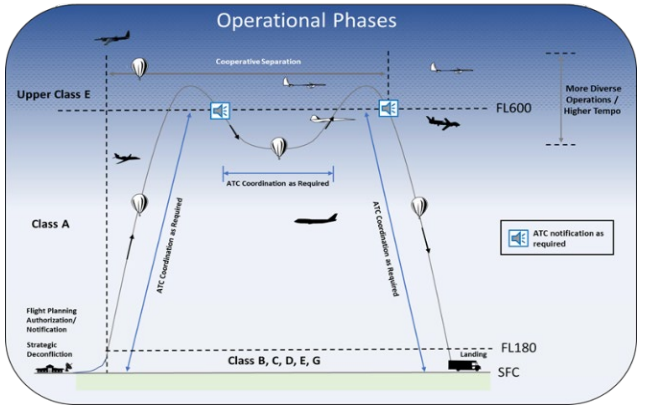The Federal Aviation Administration (FAA) has published concept of operations on Upper Class E Airspace Traffic Management (ETM) Concept of Operations (ConOps).
Upper Class E airspace operations occur over 60,000 feet above sea level in the National Airspace System (NAS). These operations have historically been limited due to the challenges that traditional, fixed-wing aircraft face in the reduced atmospheric density of the upper stratosphere. However, advances in propulsion and aerodynamics have led to the introduction of sophisticated aircraft operating at very high altitudes, resulting in increased demand to satisfy research objectives and service demands.
The FAA’s current Air Traffic Management (ATM) system cannot cost-effectively scale to meet the needs of this envisioned Upper Class E Airspace environment. The increase in operations, disparate vehicle performance characteristics, and unconventional operational needs require innovative solutions through public-private partnerships and leveraging other cooperative traffic management approaches, such as UAS Traffic Management (UTM).
The FAA is collaborating with NASA and aviation industry stakeholders on the Upper Class E Airspace Traffic Management (ETM) Concept of Operations (ConOps) to develop a vision for managing flights above 60,000 feet. Joint engineering analyses and simulations will inform the ConOps, which will describe a cooperative traffic management environment where operators are responsible for coordinating and executing their diverse operations. The ConOps will also address operations transiting to/from Upper Class E Airspace and operations that straddle the boundary between Upper Class E and Class A airspaces (18,000-60,000 feet). Ultimately, the ConOps will inform future policies, regulations, services, and infrastructure required to support safe and efficient operations.
For more information:
www.faa.gov




